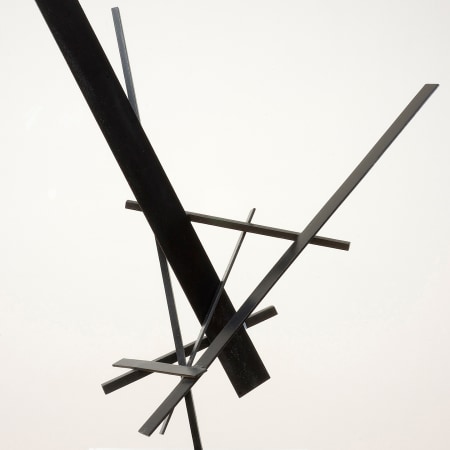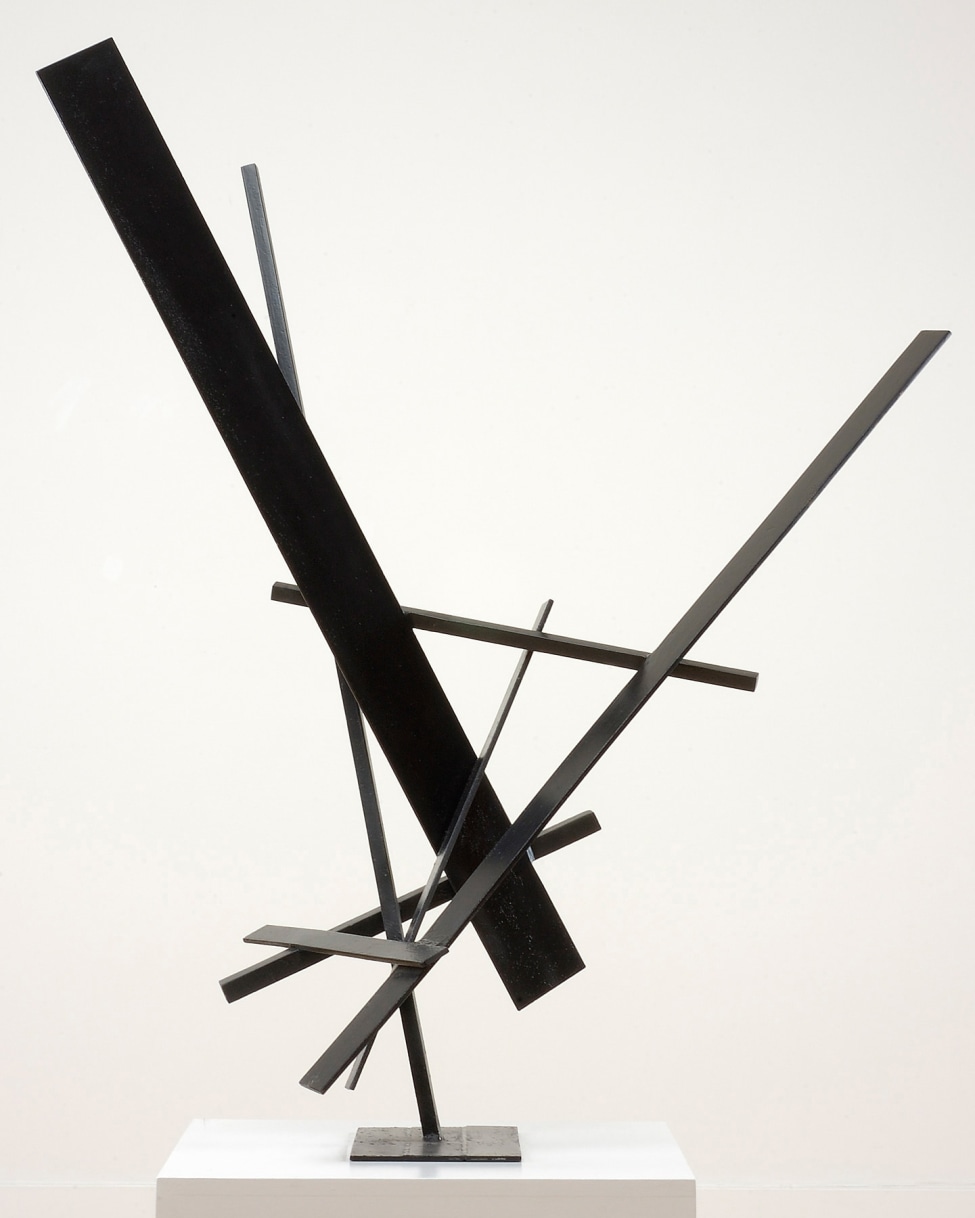
"Working as an artist represents for me an attempt to arrive at a truth...Ido not see art as merely the expression of our times, or as a by-product of one's direct environment, but as a creative endeavor in understanding oneself and as an exploration of the unconscious which arises from working without preconceived ideas." Brian Wall, 1959
Hackett Mill is pleased to present Spatial Planes: 1957-1966 an exhibition of British sculptor Brian Wall's early work.Wall was one of the first artists to construct wholly abstract sculpture from welded steel, and to do so without reference to the human form. A key member of the St. Ives artists' colony, a group of British artists that surrounded sculptor Barbara Hepworth and painters Ben Nicholson and Patrick Heron in the 1950s, Wall has remained faithful to constructivist principles of formality and simplicity throughout his career.
In 1956, in Cornwall, Wall produced his first welded steel sculptures, and he has continued his explorations with the medium and technique for over fifty years.The composition of these early sculptures aligns closely with Piet Mondrian's Neo-Plastic grid, with their strong emphasis on rectilinear forms. In 1958 however, Wall relaxes the strictness of the composition and introduces diagonals into the work.The looseness of the forms creates a visual parallel to gestural mark making, and specifically Japanese calligraphy.Of these early works, Wall said he was able to "make a gesture and know it would stay." The resulting sculptures are poetic and delicate, despite the inherent rigidity of the steel. This lyricism is also evident in Wall's more recent large-scale stainless steel compositions.
Chris Stephens, curator of Modern British Art at The Tate, says, "one of the most consistent and important aspects of Wall's work is his understanding of the way in which sculpture can define the space it occupies." He goes on to say that Wall's sculptures "energize ambient space." Wall's sculptures are meant to be experienced from all directions.They have no defined front or back and Wall often places them on the ground rather than a pedestal "to confront the spectator so that it was actually part of his environment."Wall operates within a restricted catalogue of elements (squares, circles, lines and boxes) and then paints the entire sculpture with flat color to lay emphasis on the forms of the objects and erase the welding marks and other technical pentimenti.
Art historian Peter Selz has written that Wall's sculptures "have integrity, clarity, and strength. One perceives their entirety immediately, before becoming involved in the intricacies of their internal relationships." His pieces are resolutely objective; Wall has defied trend by remaining faithful to high modernist principles of clarity and economy of form.
In 1960, Wall moved from St. Ives to London and, in 1962, was appointed Head of Sculpture at the Central School of Art and Design (now Central St. Martins). In 1972, he moved to the United States and joined the faculty of the University of California, Berkeley (1969-1992). In 1983, the San Francisco Museum of Modern Art honored Wall with a career retrospective (the exhibition originated at the Seattle Art Museum). His work is held in many public collections including the Tate, London; Museum of Art, Dublin; Oakland Museum of California; University Art Museum, Berkeley; Seattle Art Museum; and the Sheldon Memorial Art Gallery and Sculpture Garden, Lincoln. Currently, the artist maintains a studio in Emeryville, California, and residences in San Francisco and the Languedoc region of France.

Brian Wall
Form Y-1
51 x 43 x 21
Painted steel
1959